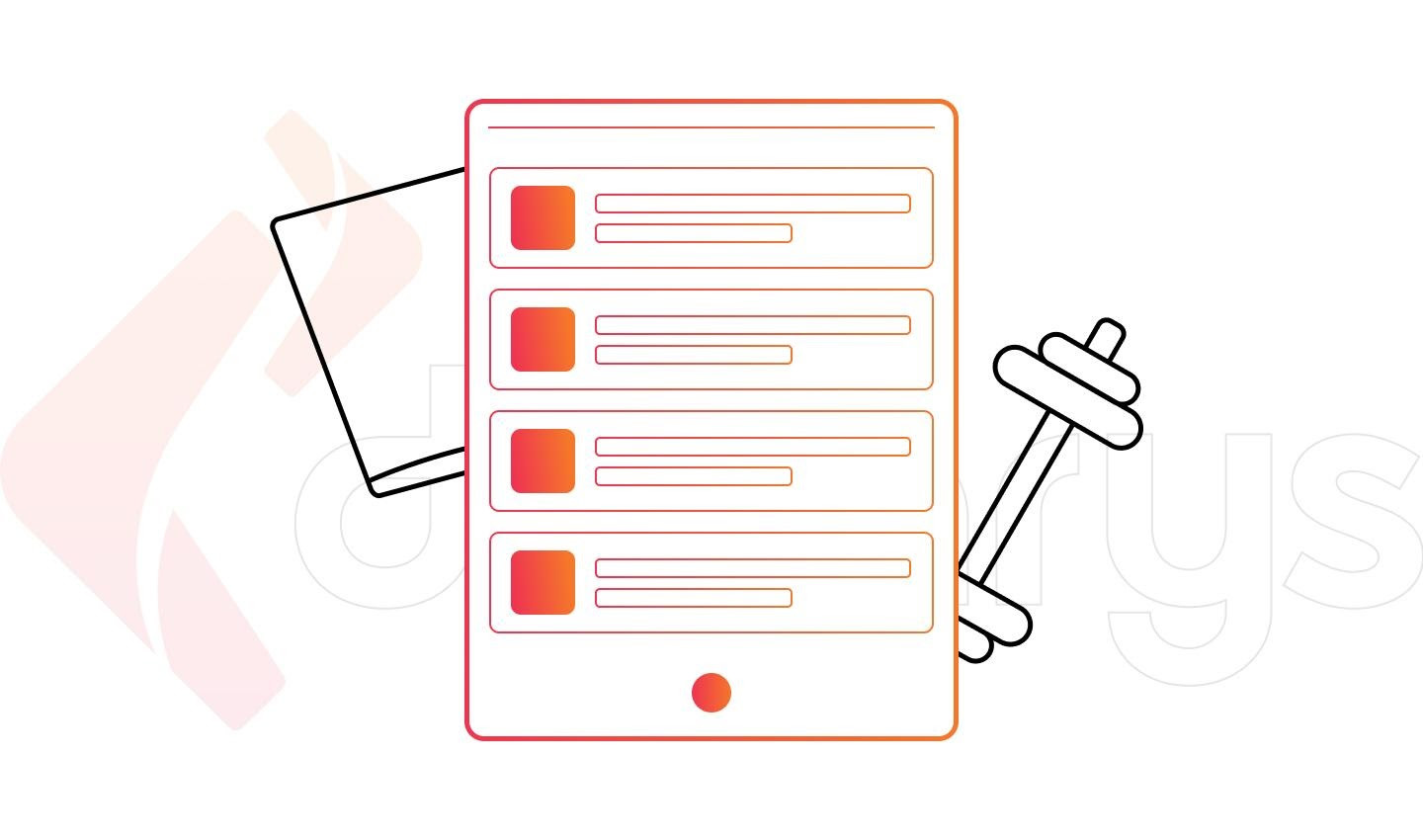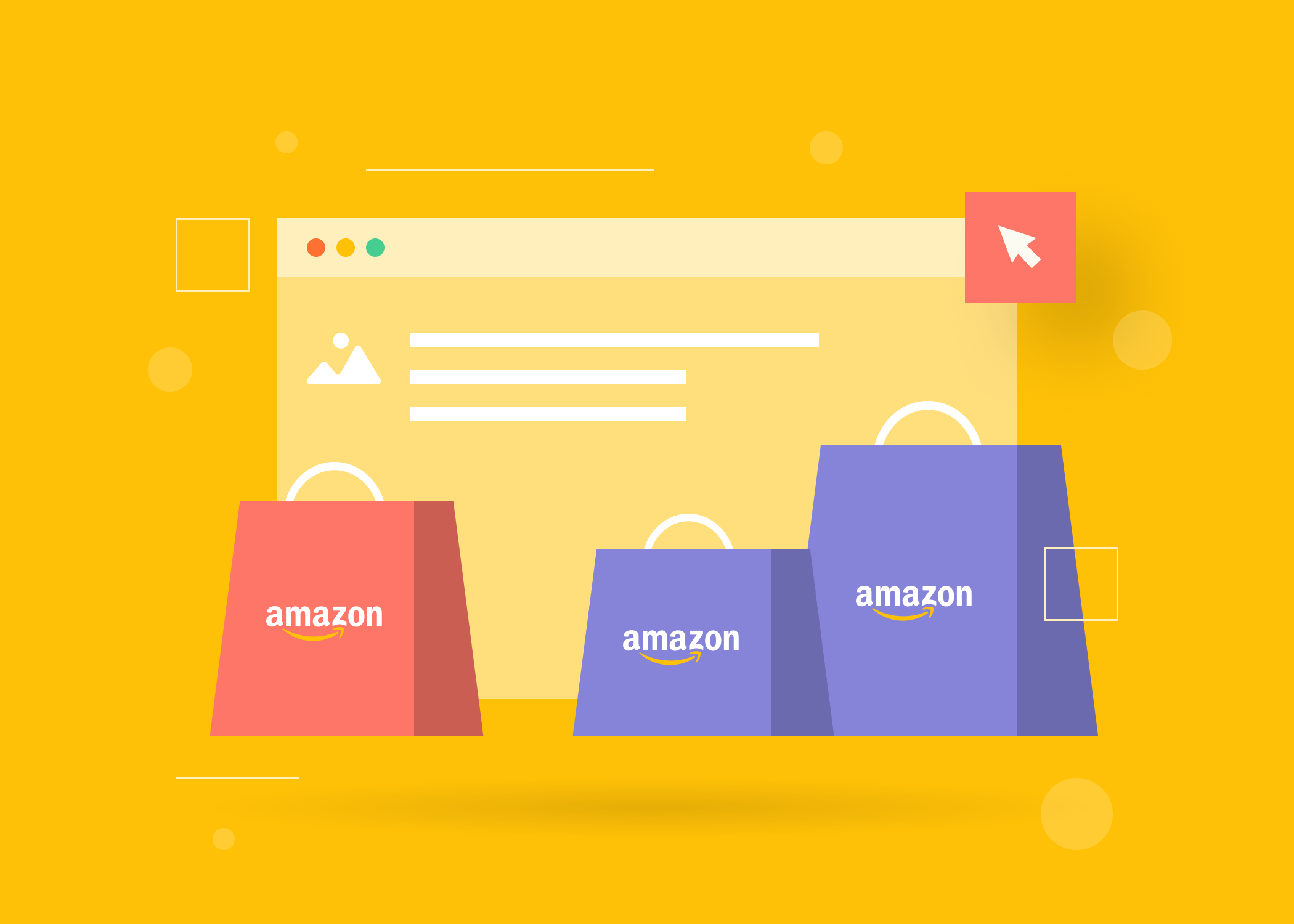Content
How to Create an Online Education Marketplace

Time to read: 15 minutes
Information technology is constantly evolving, and e-learning has found increasing application scenarios and become very popular. Studies show that online courses provide a great deal of hands-on knowledge and day-to-day subject skills and are a good addition to traditional education.
Lets talk about itHave a project in mind?
Today, online education is available from anywhere in the world, at any time, and at a convenient pace for each student. This allows students maximum emotional comfort and also helps them save money.
The idea of creating an education marketplace that will allow people worldwide to have freedom of action in terms of acquiring new knowledge and skills has arrived. How can you implement this? Our article provides the definitive answers on creating an online education marketplace, avoiding pitfalls, and keeping current trends in mind.
Why E-Learning Works
In short, the educational marketplace is an e-learning platform that allows users to deepen their knowledge of a specific area by using courses offered by professionals in various fields. According to the comprehensive statistics below, the e-learning market will grow by utilizing cutting-edge technologies and providing users with an even more engaging experience.
- By 2025, the global e-learning market will reach $325 billion.
- 60% of Internet users admit that the online learning format suits their lifestyle well.
- VR and AR can be used in e-learning, which will make it more interactive. The share of these technologies in the e-learning market is projected to reach $1.478 million in 2027.
- 42% of companies report that online training for their employees has helped them increase their revenues.
- 81% of students say e-learning has helped them improve their grades.

Major e-learning advantages
The spread of online learning is associated with the rapid development of communication technologies, with the global Internet occupying a special place among these. Opportunities and tools for organizing a high-quality educational process are increasing in number. Therefore, the number of online projects that offer training courses and other advanced training services is constantly growing too. There are many advantages on the part of online learning. Here are just a few of them:
-
A high level of training involvement: Various formats for presenting materials and monitoring assimilation will interest the student, increasing the motivation to study and, ultimately, enhancing the quality of the course passage.
-
Variety of courses: Students have a vast database of courses at their disposal on numerous training platforms. In addition, the range of topics is impressive: language classes, business training, and lessons in applied sciences and other highly specialized disciplines.
-
The freedom to build a course: Elements of e-learning allow you to combine different materials and knowledge-control tools, which helps the course author create a unique training program that will provide results for students.
-
Convenient access to training: As mentioned above, well-constructed e-learning allows students to access this learning from anywhere in the world and at any time. The primary condition is the availability of a smartphone or computer, as well as Internet access. The owner or administrator of the course can also work through mobile devices.
Let us summarize what has been said in this short video on the benefits of online learning:
These statistics and major advantages show that people can achieve different goals using e-learning solutions. Let us find out more about the specifics of choosing a business model for an e-learning platform.
Choosing the Right E-Learning Business Model
To create an e-learning project, you must initially select a site specialization. Then, you can promote one to two main course categories or create a one-stop portal that brings together the hottest e-learning topics.
Different e-learning profiles
It is essential to understand which audience you should target. This audience must have a thirst for knowledge and be financially able to pay. It is better to begin creating a project by choosing a niche.
Technologies
In our computer age, choosing a technological niche can be a good idea for online courses. Many people must understand how to use technology in many formats. Here, you can create courses on topics such as the following:
- Website/application creation
- Machine learning
- Programming software
- Repair of equipment
Sports and health
This is a competitive niche, but there are not many quality products in it. Gone are the days when you could make money on video lessons filmed at the gym. A comprehensive approach to health, combined with ideology, is now included in the course.

The good thing about the health niche is that clients are motivated. They want to improve their health, get rid of pain, and look good.
Read also: How to Start an Online Sports Store and Marketplace on Magento or Shopware
Self-development
The topic of self-development courses has remained very popular for many years. An individual plan for personal growth helps people change and become who they want to be. This niche includes a variety of topics, from public speaking training to speed-reading courses.
Foreign languages
This niche is traditionally in demand, and despite the big players, such as Duolingo and Babbel, there are plenty of earning opportunities. Language courses are a fairly long-term event in which the presence of a goal encourages clients to move to new levels of learning. This is a niche in which users will interact with the product for a long time, and the course success depends on many components – teaching staff, methodology, approach, and motivation for learning.
Remote professions
According to experts, within 20 years, most modern professions will cease to exist. Many people already work remotely today, but only a few of them make good money doing so. Others want to go freelance but hesitate. If you can motivate them and show how a person can earn decent money, you will have two target audiences at once: people who come to you consciously to master a profession and those who have not yet decided exactly what they want to do. When offering courses for remote jobs, you need to use strong triggers, such as “being able to spend more time with your family,” “traveling around the world,” and sharing the cases of successful remote workers.

You may also like Marketplace vs Your Own E-Commerce Website in 2022: What Is Best for Business?
Major types of e-learning platforms
Let us start with the fact that e-learning can be synchronous or asynchronous. Synchronous e-learning is a meeting in which communication between the teacher and the students takes place in real time. All students are in the online classroom at the same time. They can even participate in discussions with their teacher. This activity is much like a traditional lesson. However, there is a significant difference – the teacher cannot gauge the students’ reactions.
Asynchronous learning is a distance learning method in which the student does not meet or contact the teacher — for example, learning via screencasts and YouTube videos.
Lets talk about itHave a project in mind?
Monetization models
When creating e-learning products, it is essential to understand how to bring this activity to earnings and generate income. To ensure a high ROI, it is vital to use a mix of earning strategies.
Here are some monetization models you can follow:
|
Monetization Model |
Description |
|
Subscriptions |
This online education model allows users to subscribe to a service (monthly or annually). Once signed up, they get access to educational content anytime, anywhere, as long as their subscription is active. |
|
Freemium |
If your project is a startup, then the free model will be the best monetization solution. This will be a method of free marketing that will help you grow your business. Freemium suggests that you can provide some services for free, for example, the training course itself but that the user can only obtain a certificate of completion for this course for a fee. The edX platform works based on a similar system. |
|
Online advertisements |
This is one of the most apparent methods of monetizing content on an e-learning platform. The website owner will be paid when users click on the banner ad or every time it’s displayed to them. The owner will be paid if the user is converted into a client after clicking on the ad. |
|
Commission |
The essence of monetization via commission is that the owners of the e-learning platform can charge a commission for transactions on the site. There are two options for development. First, when a customer purchases a course, the marketplace charges a percentage or a flat fee for these services. The second option is to capture a commission when the course owner withdraws the student’s money for the course. There is also a third scenario – obtaining commissions from both parties. |
What to Consider When Building an Education Marketplace
With a projected value of up to $243 billion by 2022, the e-learning industry has drastically soared in popularity. Thus, it is high time for you to tap into this $200-billion segment with the next-generation e-learning marketplace.
E-Learning marketplace development: Dinarys’s workflow process
As providers of leading e-commerce solutions, we invite you to plunge into our workflow and walk through the process of creating an educational marketplace step by step. Here is our workflow process in brief:
Discovery stage
The discovery phase is the first step in the project development process. Firstly, we flesh out the purpose, value proposition, and expectations for a project. There are multiple steps within this stage:
|
Step |
Description |
|
Creating SRS (software requirements specification) |
The SRS is a document or set of documents that describes the features and behavior of a system or software application. This step is aimed at detecting all problems, solutions, value propositions, customer segments, user roles, key metrics to define product success, competitors, competitors’ strengths and weaknesses, and cost and revenue structure. |
|
Prototype/wireframes |
Long before we begin working on your project, you will receive a simple representation of the digital interface and its critical features. Coupled with an SRS, it provides a clear understanding of how the project will work and feel once it is finished. |
|
MVP development plan and estimates |
At this stage, you will receive a suggested team lineup, an accurate estimate of the development timeline, and a budget. |
The discovery phase is a proven way to reduce risks, estimate and cut costs, and create a reliable roadmap to achieve outstanding business results.
Design and development stage
We repeat the product development step for every feature to create a final visual representation of your product and implement it in code. These steps also include a range of testing techniques to detect potential issues and fix them before the product is released.
Here are the product design/development steps:
|
Step |
Description/What will be done |
|
UI Design |
|
|
Server-side application development |
|
|
Client-side application development |
|
|
Infrastructure management and DevOps |
|
|
Quality assurance |
|
Finally, we create robust feature-rich custom websites that suit your business, match your requirements, and exceed your expectations.
Consider reading: How To Create a Peer-to-Peer Marketplace.
Basic features of your e-learning marketplace
Even though the e-commerce world is constantly changing and marketplaces offer many advanced features, new products, services, and newfangled web designs, there are still some features that remain unchanged. They are at the core of any online marketplace functionality and serve as a basis for all other capabilities. Next, we will take a look at what basic features your e-learning marketplace should have.
User registration and authorization
This will be a common login step for both sides – students and teachers. Users must securely, consistently register/log into the system account. At the same time, navigation should be as clear as possible so that neither students nor course trainers have problems creating a profile or adding other necessary information about courses.
Student profile
The student’s profile can contain personal data, information about the purchase of courses, points earned, and certificates. Student contacts, qualifications, work experience, and other necessary data should be included as well.
Dashboard and analytics
When developing a platform for e-learning, adding a dashboard should be a priority feature. This function allows teachers to monitor student progress against multiple metrics, such as test scores and course attendance. The dashboard will also help you analyze performance indicators, conversion rates, and course duration.
Course page
Each course page of an e-learning marketplace should contain a program description, schedule, price, duration, language, and the qualifications of the instructors. You can also provide lecturers with the ability to publish introductory videos and thus increase their credibility in the eyes of potential students. You can also add a review section so that customers can read user testimonials and make informed decisions.
Course creation and editing
To maintain a competitive posture, e-learning software solutions must allow teachers to create and update their courses. Therefore, e-learning software should provide course-building tools enabling instructors to develop a course structure; publish tests and exercises; insert links; and upload materials, including text, audio, and video files.
Admin panel
It’s worth adding the admin panel function for the e-learning marketplace. The administrator is allowed to manage content, check out new courses, and add or remove users. Also, they should be able to assign access permissions or change subscriptions.
Multi-language support
The e-learning platform must be multilingual. Your users can be from any part of the world, and choosing their language so as to use your site will be the first step of the interaction. Having a multilingual platform will help you reach a wider audience, expand your market influence, and increase profits.
Payment gateway integration
The more payment options you add to your e-learning marketplace, the easier it will be for your users to pay. In this way, you can reach a wider audience and generate more revenue.
Notifications
An online course marketplace should inform customers about course updates and the start of lessons via emails or messages delivered to smartphones. You can also enable browser notifications to deliver a superior user experience. To add this feature, our software engineers integrate an API, for example, Firebase.
Lets talk about itHave a project in mind?
Gamification in e-learning
Gamification is the practice of applying gaming formats and tactics to boost participation and engagement in e-learning activities. Gamification can help to make e-learning more enjoyable, immersive, and accessible, resulting in higher uptake and ongoing participation. Here are some elements of e-learning applications that can help engage and motivate students:
Points. Points can show progress, for example, one’s place in the overall rankings. However, you should not get carried away with them: points are monotonous and abstract, and a set of points can motivate users only up to a certain limit.
Badges. A more meaningful version of points, a badge can be a new title (for example, “master of the game”) or an asterisk (received for completing a quest). The advantages of a badge are that it becomes a sign of status and reputation in the gaming world. In addition, they can play a special role in the corporate environment and indicate to an employer that a staff member has achieved particular success in training.
Ratings. On the one hand, ratings become part of the learning environment and generate healthy competition. However, on the other hand, they can reduce the motivation to play if the participant realizes that the first place is unattainable. That is why ratings that take several indicators into account work better.
Of course, these are not the only elements that will make up your game. Rather, they represent the starting point on the path to meaningful gamification.

What do the practices in your training course consist of?
- Game tasks (tests, quests, exercises, and riddles). Missions should be sufficiently (but not too) challenging to ensure that the player is satisfied when they succeed.
- Odds (elements of randomness in the game space).
- Competition (during which one player or team wins and another player or team loses).
- Cooperation (the ability to combine efforts to achieve a result).
- Resources (points, badges, artifacts that the player seeks to get).
- Transactions (the ability to exchange or buy/sell between players or between the player and the system).
- Feedback (information about the success of the players).
Each of the game elements mentioned above can be successfully implemented in an e-learning application to engage and motivate students, but to create a successful gaming system, it is not necessary to use the full range of functions. At any stage of introducing gamification into the training system, the main thing to remember is that the task of an online course is to teach. There is nothing wrong with fun and play, but it should not become the primary goal.
Education marketplace architecture: Hire Dinarys to get ready for heavy loads
In terms of architecture, the educational marketplace should primarily use microservices. Our DevOps team can host the solution on AWS or Google Cloud (by the way, we are an official partner of Google Cloud), which will allow the marketplace to withstand the enormous load on the infrastructure while numerous people watch courses without restrictions.
Consider reading the following: Microservices: Is Your E-commerce Company Ready to Follow This Architectural Style?
In our development practices, we use modern ways of working with code – CI/CD, mainly through Jenkins – to automate and systematize code delivery to the test environment. We also use ELK (ElasticSearch, Logstash and Kibana) as a monitoring tool on all projects, avoiding lengthy and complex downloads for your e-learning marketplace.
Ready to Build an E-Learning Platform Better Than Coursera?
The online education market is large and growing every day, so don’t waste your time and don’t miss your chance to create a platform for the whole world to study from!
We hope that we have answered your questions regarding the e-learning marketplace in this article. However, we have a few more ideas that we would be happy to discuss in private. Contact us for more advice on how to develop an educational marketplace. Our team of professionals is ready to offer you individual web development and the best solutions for filling and creating categories, website pages, and flawless UX/UI design.
FAQ
It is an Internet platform for online education. This is a place where anyone can find any course and any educational program and the author of the course can find his client.
Gamification is the practice of applying gaming formats and tactics to boost participation and engagement in e-learning activities. Gamification can help to make e-learning more enjoyable, immersive, and accessible, resulting in higher uptake and ongoing participation.
There are many topics on which to create an online course, but there are some that, in our opinion, are always popular and remain in demand. These include courses in technology, sports and health, self-development, foreign languages, and mastering remote professions.
Online courses offer convenience because you can study any time you want, wherever you like. In addition, e-learning gives students the flexibility to spend time on work, family, friends, significant others, or any activity they want. Another advantage of online learning is reduced financial costs. Online education is far more affordable than physical learning. Online learning cuts many expenses, including hiring an instructor, booking a facility, printing materials, and transport.
Let professionals meet your challenge
Our certified specialists will find the most optimal solution for your business.




